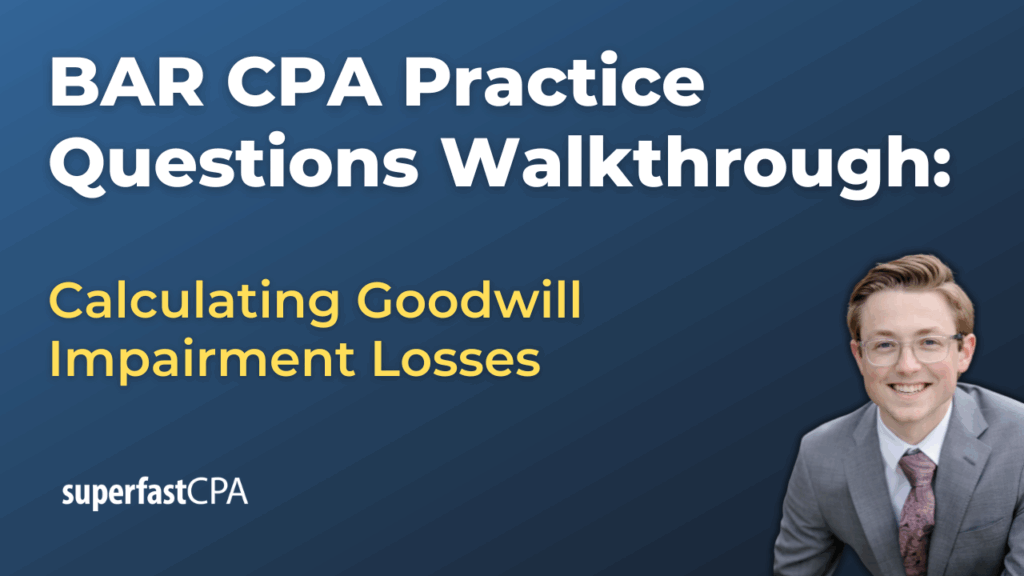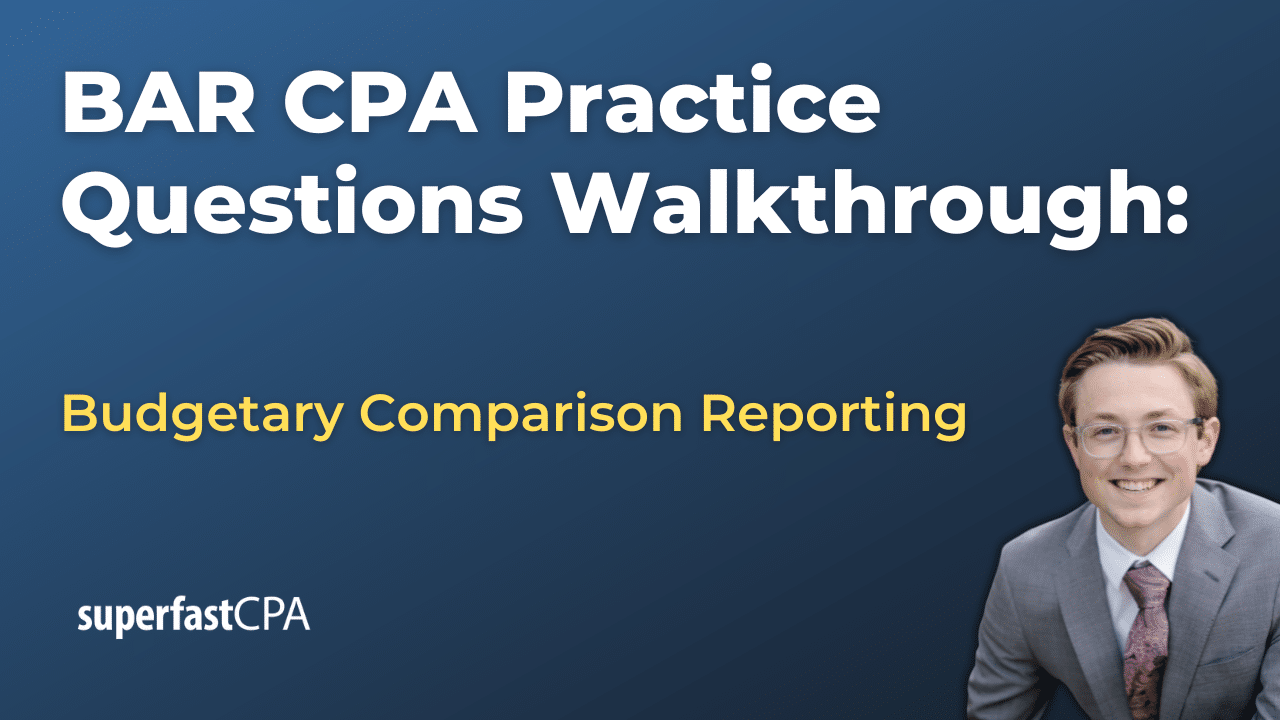In this video, we walk through 5 BAR practice questions teaching about calculating goodwill impairment losses. These questions are from BAR content area 2 on the AICPA CPA exam blueprints: Technical Accounting and Reporting
The best way to use this video is to pause each time we get to a new question in the video, and then make your own attempt at the question before watching us go through it.
Also be sure to watch one of our free webinars on the 6 “key ingredients” to an extremely effective & efficient CPA study process here…
Calculating Goodwill Impairment Losses
When it comes to the financial reporting of goodwill and other indefinite-lived intangible assets under U.S. GAAP, CPA exam candidates must be able to:
- Calculate the initial carrying amount of goodwill and indefinite-lived intangible assets
- Determine if and when those assets are impaired
- Prepare appropriate journal entries to reflect recognition and impairment
This guide breaks down the essential concepts and shows how they’re tested through practical examples.
Initial Measurement of Goodwill
Goodwill arises in a business combination when the purchase price exceeds the fair value of the acquired entity’s net identifiable assets. It captures elements like brand reputation, customer loyalty, or synergies that are not separately recognized on the balance sheet.
Example:
Premier Corp. acquires Summit Inc. for $2,800,000. The fair value of Summit’s identifiable assets is $3,200,000 and its liabilities are $600,000.
Net identifiable assets = $3,200,000 − $600,000 = $2,600,000
Goodwill = $2,800,000 − $2,600,000 = $200,000
This $200,000 is recorded as goodwill on the consolidated balance sheet.
Journal Entry (simplified):
- Dr. Identifiable Assets $3,200,000
- Dr. Goodwill $200,000
- Cr. Liabilities Assumed $600,000
- Cr. Cash or Equity Issued $2,800,000
This is typically embedded within a full acquisition entry.
Goodwill Impairment Testing
Under ASC 350, goodwill is not amortized but must be tested annually—or more frequently if a triggering event occurs—for impairment at the reporting unit level.
The impairment test involves two numbers:
- The carrying amount of the reporting unit (including goodwill)
- Its fair value
If the fair value is less than the carrying amount, the difference is recognized as an impairment loss—but only up to the amount of goodwill.
Example 1: Impairment Within Goodwill
Ajax Corp.’s Coastal Division has a carrying amount of $3,800,000 (including $1,000,000 goodwill). Fair value is estimated at $3,200,000.
Impairment loss = $3,800,000 − $3,200,000 = $600,000
Because goodwill is $1,000,000, the full $600,000 can be recognized.
Journal Entry:
- Dr. Impairment Loss $600,000
- Cr. Goodwill $600,000
Example 2: Impairment Capped by Goodwill
Delmont Corp.’s Western Division has a carrying amount of $6,200,000, including $400,000 of goodwill. Fair value is $5,600,000.
Calculated difference = $600,000
But since goodwill is only $400,000, the impairment loss is limited to $400,000.
Journal Entry:
- Dr. Impairment Loss $400,000
- Cr. Goodwill $400,000
This treatment prevents goodwill impairment losses from flowing beyond the recorded asset balance.
Recognizing and Recording Impairment
The journal entry for a goodwill impairment is straightforward:
- Debit: Impairment Loss (income statement)
- Credit: Goodwill (balance sheet reduction)
Example 3:
Denton Corp. determines that the carrying amount of its Harbor Division exceeds fair value by $450,000, and goodwill on the books is $600,000.
Since the shortfall is less than the goodwill, the full $450,000 is written off.
Journal Entry:
- Dr. Impairment Loss $450,000
- Cr. Goodwill $450,000
This journal entry structure is specific to goodwill and differs from impairments of other assets (such as inventory or PP&E), which may involve accumulated depreciation or valuation allowances.
Pillar Topics Recap
From these examples, three core principles emerge:
- Goodwill is initially recorded as the excess of purchase price over the fair value of identifiable net assets.
- A goodwill impairment loss is recognized when the carrying amount of a reporting unit exceeds its fair value, limited to the recorded goodwill.
- The journal entry for goodwill impairment includes a debit to impairment loss and a credit to goodwill.
These foundations support your ability to answer both calculation-based and journal entry questions related to goodwill and intangible asset accounting under U.S. GAAP.









